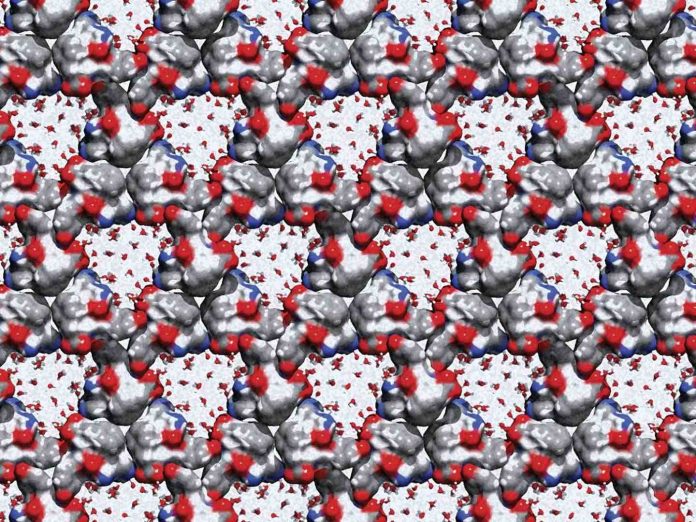Imagine harnessing evaporation as a source of energy or developing next generation actuators and artificial muscles for a broad array of applications. These are the new possibilities with the creation by an international team of researchers, led by The City College of New York’s Xi Chen and his co-authors at the CUNY Advanced Science Research Center, of shape-changing crystals that enable energy transfer from evaporation to mechanical motion. Entitled: “Mechanistic insights of evaporation-induced actuation in supramolecular crystals,” the study appears in the journal “Nature Materials.”
Different from traditional crystals that are usually stiff and brittle, the new crystals have the ability to change their shapes, enabled by their molecular architectures. The crystals are comprised of a pattern of small pores that is interspersed with connecting flexible domains that are repeated throughout the crystal structure. The pores that run throughout the crystals strongly bind to water molecules.
“When evaporation causes water to be removed from the pores, this results in a forceful deformation of the entire crystal through a network-like connection. The resulting shape-change is reversed when water vapor is reintroduced,” said Chen, the corresponding author of the research and an assistant professor, chemical engineering, in CCNY’s Grove School of Engineering. “Our peptide crystals allow the direct observation of water-material interactions at the molecular level by using existing crystallographic, spectroscopic and computational methods. The revealed actuation mechanisms are applicable more generally for the deigns of materials or structures that efficiently harness evaporation.”
Materials that drive these motions are known as water-responsive or humidity-responsive materials. These materials, that swell and contract in response to changes in humidity, could directly and efficiently convert energy from evaporation into mechanical motions. This new field opens up possibilities for accessing untapped water evaporation as a source of energy as well as developing better actuators and artificial muscles for modern engineering systems.




